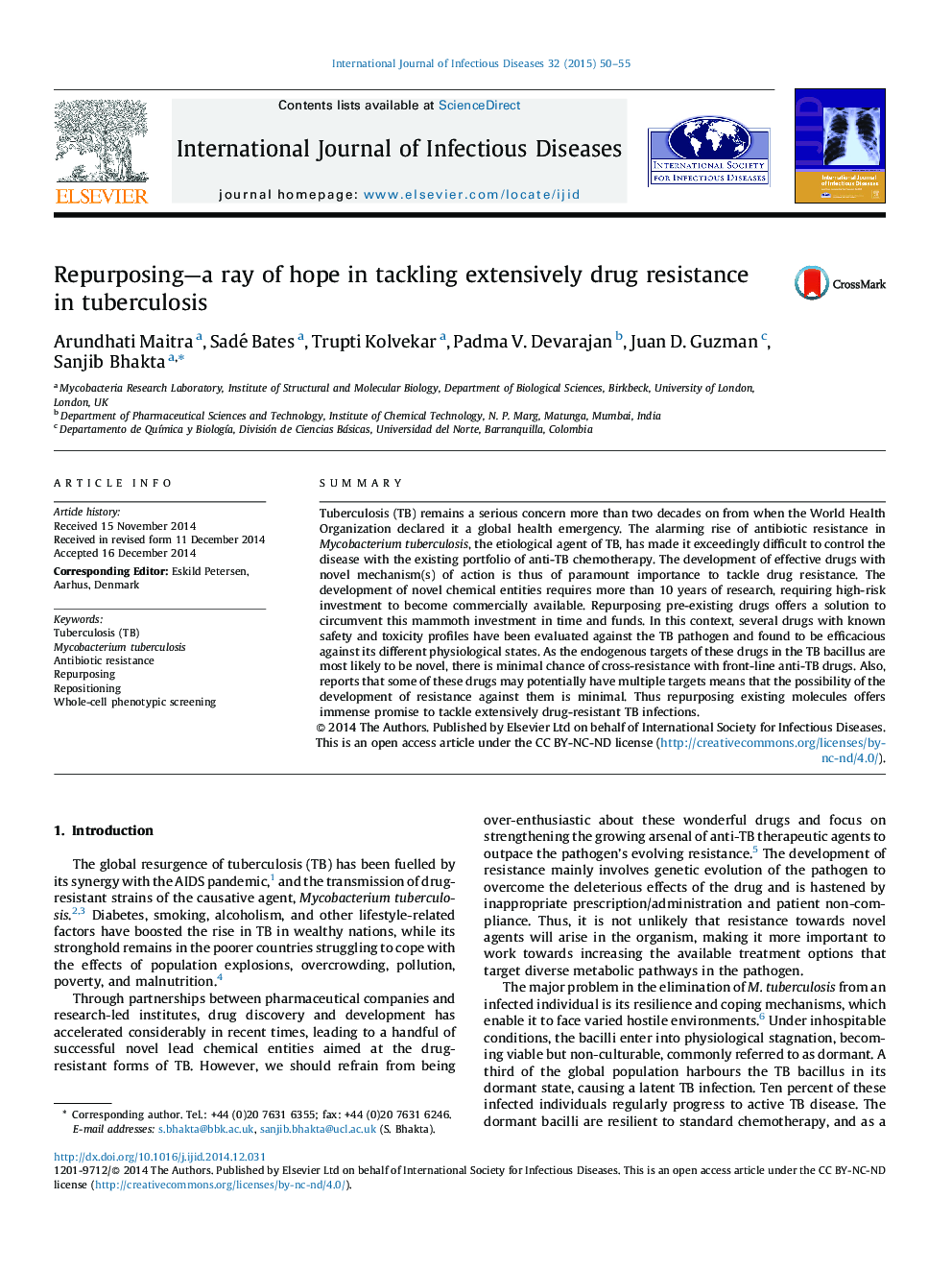| کد مقاله | کد نشریه | سال انتشار | مقاله انگلیسی | نسخه تمام متن |
|---|---|---|---|---|
| 3362199 | 1592063 | 2015 | 6 صفحه PDF | دانلود رایگان |
• Due to the costly and lengthy process of drug discovery and development, repurposing old drugs has emerged as an attractive alternative strategy to provide rapid access to valuable anti-tuberculosis (TB) medicines for patients infected with drug-resistant strains who would otherwise not receive appropriate treatment.
• Several old drugs used for treating other diseases have been identified to display potent growth inhibitory properties against Mycobacterium tuberculosis, the causative agent of TB.
• The repurposed drugs moxifloxacin, linezolid, and clofazimine are used to treat extensively drug-resistant TB when first- and/or second-line drugs fail.
• Clinical trials to assess the anti-TB efficacy of promising candidates, such as the combination of the orally available β-lactam tebipenem with the β-lactamase inhibitor clavulanic acid and the phenothiazines, thioridazine, and chlorpromazine, need serious deliberation and action.
SummaryTuberculosis (TB) remains a serious concern more than two decades on from when the World Health Organization declared it a global health emergency. The alarming rise of antibiotic resistance in Mycobacterium tuberculosis, the etiological agent of TB, has made it exceedingly difficult to control the disease with the existing portfolio of anti-TB chemotherapy. The development of effective drugs with novel mechanism(s) of action is thus of paramount importance to tackle drug resistance. The development of novel chemical entities requires more than 10 years of research, requiring high-risk investment to become commercially available. Repurposing pre-existing drugs offers a solution to circumvent this mammoth investment in time and funds. In this context, several drugs with known safety and toxicity profiles have been evaluated against the TB pathogen and found to be efficacious against its different physiological states. As the endogenous targets of these drugs in the TB bacillus are most likely to be novel, there is minimal chance of cross-resistance with front-line anti-TB drugs. Also, reports that some of these drugs may potentially have multiple targets means that the possibility of the development of resistance against them is minimal. Thus repurposing existing molecules offers immense promise to tackle extensively drug-resistant TB infections.
Figure optionsDownload high-quality image (135 K)Download as PowerPoint slide
Journal: International Journal of Infectious Diseases - Volume 32, March 2015, Pages 50–55
